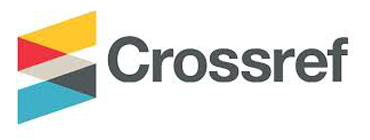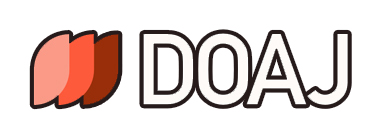DEVELOPMENT OF HOLISTIC-BASED SCIENCE LEARNING VIDEOS : AN EFFORT TO IMPROVE AFFECTIVE SKILLS OF MADRASAH IBTIDAIYAH STUDENTS
Abstract
Full Text:
PDFReferences
Agustini, N. L. P. E., Renda, N. T., & Murda, I. N. (2015). Pengaruh model pembelajaran VCT terhadap hasil belajar ranah afektif mata pelajaran PKn siswa. Mimbar PGSD Undiksha, 3(1). https://doi.org/10.23887/jjpgsd.v3i1.5744
Betwan, B. (2019). Pentingnya Evaluasi Afektif Pada Pembelajaran PAI Di Sekolah. Al-Fikri: Jurnal Studi Dan Penelitian Pendidikan Islam, 2(1), 45–60. http://dx.doi.org/10.30659/jspi.v2i1.4015
Chidiac, R. S., & Ajaka, L. (2018). Writing Through the 4Cs in the Content Areas–Integrating Creativity, Critical Thinking, Collaboration and Communication. Eur. Sci. J. August, 7881, 95–102.
Darmadji, A. (2011). Urgensi Ranah Afektif Dalam Evaluasi Pendidikan Agama Islam Di Perguruan Tinggi. Unisia, 181–192. https://doi.org/10.20885/unisia.vol33.iss74.art7
Dick, W., & Carey, L. (1985). The systemic design of instruction. Scott, Foresman and Company.
Dweck, C. S. (2013). Self-theories: Their role in motivation, personality, and development. Psychology press.
Fitriansyah, F. (2020). Effectiveness of Video Learning Development Announcing. International Journal of Theory and Application in Elementary and Secondary School Education, 2(1), 1–7. https://doi.org/10.31098/ijtaese.v2i1.67
Forbes, H., Oprescu, F. I., Downer, T., Phillips, N. M., McTier, L., Lord, B., Barr, N., Alla, K., Bright, P., & Dayton, J. (2016). Use of videos to support teaching and learning of clinical skills in nursing education: A review. Nurse Education Today, 42, 53–56. https://doi.org/10.1016/j.nedt.2016.04.010
Hadi, S. (2017). Efektivitas penggunaan video sebagai media pembelajaran untuk siswa sekolah dasar. Seminar Nasional Teknologi Pembelajaran Dan Pendidikan Dasar 2017, 96–102. https://pasca.um.ac.id/conferences/index.php/sntepnpdas/article/view/849
Halimah, S. (2018). Integrasi nilai-nilai agama dan karakter dalam kurikulum pendidikan guru mengacu KKNI dan SNPT. Jurnal Tarbiyah, 24(2), 201–225. http://dx.doi.org/10.30829/tar.v24i2.214
Hanif, M. (2020). The Development and Effectiveness of Motion Graphic Animation Videos to Improve Primary School Students’ Sciences Learning Outcomes. International Journal of Instruction, 13(3), 247–266. https://eric.ed.gov/?id=EJ1270738
Hapsari, A. S., & Hanif, M. (2019). Motion graphic animation videos to improve the learning outcomes of elementary school students. European Journal of Educational Research, 8(4), 1245–1255. https://doi.org/10.12973/eu-jer.8.4.1245
He, Y., Swenson, S., & Lents, N. (2012). Online video tutorials increase learning of difficult concepts in an undergraduate analytical chemistry course. Journal of Chemical Education, 89(9), 1128–1132. https://doi.org/10.1021/ed200685p
Hoyi, R., Putri, Y. E., & Ngaliman, N. (2019). Identification of students’ attitudes on multiple learning interest and social implications of science subject. Jurnal Tarbiyah, 26(2). http://dx.doi.org/10.30829/tar.v26i2.545
Imtihan, E. I. D. Z. N. (2017). Analisis problematika penilaian afektif peserta didik madrasah aliyah. Schemata: Jurnal Pasca Sarjana IAIN Mataram, 6(1), 63–80. https://doi.org/10.20414/schemata.v6i1.836
Indriyani, D. (2017). Hak Asasi Manusia dalam Memperoleh Pendidikan. Jurnal Pendidikan Hukum, Politik Dan Kewarganegaraan, 7(1), 1–12. https://jurnal.unsur.ac.id/jpphk/article/view/392
Jannah, R. (2019). Urgensi Evalusi Ranah Afektif Dalam Pendidikan Agama Islam. Jurnal Subulana, 2(2), 29–36. https://www.journal.stitmu.ac.id/index.php/Subulana/article/view/25
Juhji, J., & Nuangchalerm, P. (2020). Interaction between Science Process Skills and Scientific Attitudes of Students towards Technological Pedagogical Content Knowledge. Journal for the Education of Gifted Young Scientists, 8(1), 1–16. http://dx.doi.org/10.17478/jegys.2020.XX
Kembara, M. D., Rozak, R. W. A., & Hadian, V. A. (2019). Based Lectures to Improve Students’ 4C (Communication, Collaboration, Critical Thinking, and Creativity) Skills. International Symposium on Social Sciences, Education, and Humanities (ISSEH 2018), 22–26. https://doi.org/10.2991/isseh-18.2019.6
Khoiri, A., Komariah, N., Utami, R. T., Paramarta, V., & Sunarsi, D. (2021). 4Cs Analysis of 21st Century Skills-Based School Areas. Journal of Physics: Conference Series, 1764(1), 012142. https://iopscience.iop.org/article/10.1088/1742-6596/1764/1/012142/meta
Kurniawan, D. A., Perdana, R., & Kurniasari, D. (2018). Identification of student attitudes toward physics learning at Batanghari District high school. The Educational Review, USA, 2(9), 475–484. http://dx.doi.org/10.26855/er.2018.09.003
Lailiyah, S. (2018). Pentingnya membangun pendidikan sains yang relevan dengan ajaran Islam. SPEKTRA: Jurnal Kajian Pendidikan Sains, 4(2), 178–187. http://dx.doi.org/10.32699/spektra.v4i2.59
Larasati, A. D., Lepiyanto, A., Sutanto, A., & Asih, T. (2020). Pengembangan e-modul terintegrasi nilai-nilai Islam pada materi sistem respirasi. Didaktika Biologi: Jurnal Penelitian Pendidikan Biologi, 4(1), 1–9. https://doi.org/10.32502/dikbio.v4i1.2766
Nadziroh, N., Chairiyah, C., & Pratomo, W. (2018). Hak Warga Negara Dalam Memperoleh Pendidikan Dasar Di Indonesia. Trihayu: Jurnal Pendidikan Ke-SD-An, 4(3), 400–405. https://doi.org/10.30738/trihayu.v4i3.2602
Ningrum, A. S., Hadi, W., & Saragih, D. (2022). Pengembangan media audiovisual berbentuk animasi untuk meningkatkan keterampilan menganalisis informasi siswa kelas V SD Tunas Pelita Binjai. Jurnal Tarbiyah, 29(1), 108–121. http://dx.doi.org/10.30829/tar.v29i1.1375
Novita, L., & Novianty, A. (2020). Pengaruh Penggunaan Media Pembelajaran Audio Visual Animasi Terhadap Hasil Belajar Subtema Benda Tunggal Dan Campuran. JTIEE (Journal of Teaching in Elementary Education), 3(1), 46–53. http://dx.doi.org/10.30587/jtiee.v3i1.1127
Nurhidayati, A., & Sunarsih, E. S. (2013). Peningkatan Hasil Belajar Ranah Afektif Melalui Pembelajaran Model Motivasional. Jurnal Ilmiah Pendidikan Teknik Dan Kejuruan, 6(2). https://doi.org/10.20961/jiptek.v6i2.12614
Parlindungan, D. P., Mahardika, G. P., & Yulinar, D. (2020). Efektivitas Media Pembelajaran Berbasis Video Pembelajaran dalam Pembelajaran Jarak Jauh (PJJ) di SD Islam An-Nuriyah. Prosiding Seminar Nasional Penelitian LPPM UMJ, 1(1). https://jurnal.umj.ac.id/index.php/semnaslit/article/view/8793
Parmiti, D. P., Rediani, N. N., Antara, I., & Jayadiningrat, M. G. (2021). The Effectiveness of Local Culture-Integrated Science Learning through Project-Based Assessment on Scientific Attitudes and Science Process Skills of Elementary School Students. Jurnal Pendidikan IPA Indonesia, 10(3), 439–446. https://doi.org/10.15294/jpii.v10i3.31301
Pebriani, C. (2017). Pengaruh penggunaan media video terhadap motivasi dan hasil belajar kognitif pembelajaran IPA kelas V. Jurnal Prima Edukasia, 5(1), 11–21. https://doi.org/10.21831/jpe.v5i1.8461
Purwaningrum, S. (2015). Elaborasi ayat-ayat sains dalam Al-Quran: Langkah menuju integrasi agama dan sains dalam pendidikan. Inovatif: Jurnal Penelitian Pendidikan, Agama, Dan Kebudayaan, 1(1), 124–141. http://jurnal.iaih.ac.id/index.php/inovatif/article/view/16
Puspasari, M. A., Murda, I. N., & Arcana, I. N. (2013). Pengaruh Metode Sosiodrama Berbantuan Satua Bali Terhadap Hasil Belajar Ranah Afektif Pendidikan Kewarganegaraan Kelas IV SD. Mimbar PGSD Undiksha, 1(1). https://doi.org/10.23887/jjpgsd.v1i1.1354
Raihana, E., Iriani, R., & Leny, L. (2017). Keefektifan Media Prezi Dan Flash Terhadap Hasil Belajar Kognitif Siswa Dengan Model Pembelajaran Connecting, Organizing, Reflecting & Extending Materi Hidrolisis Garam Di SMA Negeri 6 Banjarmasin. JCAE (Journal of Chemistry And Education), 1(1), 58–64. http://jtam.ulm.ac.id/index.php/jcae/article/view/67
Rijal, S., & Bachtiar, S. (2015). Hubungan antara sikap, kemandirian belajar, dan gaya belajar dengan hasil belajar kognitif siswa. Jurnal Bioedukatika, 3(2), 15–20. http://dx.doi.org/10.26555/bioedukatika.v3i2.4149
Riwahyudin, A. (2015). Pengaruh sikap siswa dan minat belajar siswa terhadap hasil belajar IPA siswa kelas V sekolah dasar di Kabupaten Lamandau. Jurnal Pendidikan Dasar, 6(1), 11–23. https://doi.org/10.21009/JPD.061.02
Safee, M. A. M., Saudi, M. M., Pitchay, S. A., Ridzuan, F., Basir, N., Saadan, K., & Nabila, F. (2018). Hybrid search approach for retrieving Medical and Health Science knowledge from Quran. International Journal of Engineering and Technology (UAE), 7(8), 69–74. https://doi.org/10.14419/ijet.v7i4.15.21374
Sujatmoko, E. (2016). Hak warga negara dalam memperoleh pendidikan. Jurnal Konstitusi, 7(1), 181–212. https://doi.org/10.31078/jk718
Sunami, M. A., & Aslam, A. (2021). Pengaruh Penggunaan Media Pembelajaran Video Animasi Berbasis Zoom Meeting terhadap Minat dan Hasil Belajar IPA Siswa Sekolah Dasar. Jurnal Basicedu, 5(4), 1940–1945. https://doi.org/10.31004/basicedu.v5i4.1129
Supena, I., Darmuki, A., & Hariyadi, A. (2021). The Influence of 4C (Constructive, Critical, Creativity, Collaborative) Learning Model on Students’ Learning Outcomes. International Journal of Instruction, 14(3), 873–892. https://eric.ed.gov/?id=EJ1304598
Undang-Undang Republik Indonesia Nomor 20. (2003). Undang-Undang Republik Indonesia Nomor 20 Tahun 2003 Tentang Sistem Pendidikan Nasional. Pemerintah Republik Indonesia.
Wahidah, R. (2020). Penilaian Sikap Tanggung Jawab Pada Pembelajaran Bahasa Arab Daring Via WhatsApp Di Madrasah Tsanawiyah. Prosiding Konferensi Nasional Bahasa Arab, 6(6), 506–519. http://prosiding.arab-um.com/index.php/konasbara/article/view/698
Wahyudi, I. (2020). Urgensi Penilaian Afektif dalam Kurikulum 2013. AL-IFKAR: Jurnal Pengembangan Ilmu Keislaman, 14(02), 90–106. http://ejournal.kopertais4.or.id/mataraman/index.php/ifkar/article/view/4326
Wardani, R. K., & Syofyan, H. (2018). Pengembangan Video Interaktif pada Pembelajaran IPA Tematik Integratif Materi Peredaran Darah Manusia. Jurnal Ilmiah Sekolah Dasar, 2(4), 371–381. https://doi.org/10.23887/jisd.v2i4.16154
Yuliawati, Y., Agustina, T. W., & Hadiansah, H. (2022). Pembelajaran struktur dan fungsi jaringan tumbuhan menggunakan media flipbook terintegrasi ayat-ayat al-quran untuk meningkatkan penguasaan konsep. Jurnal Bioeduin: Program Studi Pendidikan Biologi, 12(1), 33–41. https://doi.org/10.15575/bioeduin.v12i1.17274
DOI: http://dx.doi.org/10.30829/tar.v29i2.1847
Refbacks
- There are currently no refbacks.

Jurnal Tarbiyah by UIN Sumatera Utara Medan is licensed under a Creative Commons Attribution-NonCommercial-ShareAlike 4.0 International License.
Based on a work at http://jurnaltarbiyah.uinsu.ac.id/index.php/tarbiyah.
Permissions beyond the scope of this license may be available at http://jurnaltarbiyah.uinsu.ac.id/index.php/tarbiyah/about/submissions#copyrightNotice.
















